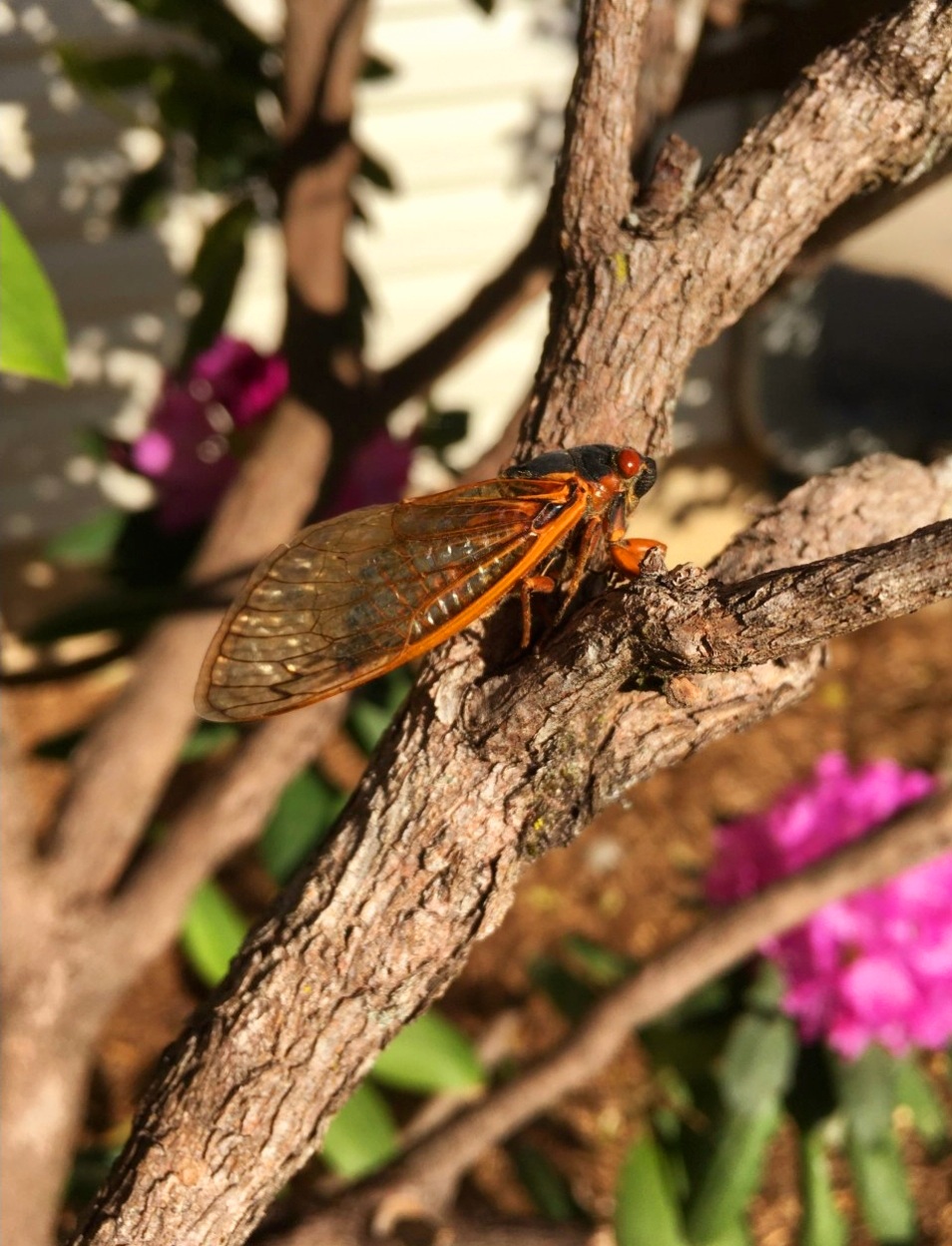
There is a lot of misinformation being spread through social media about the “invasion of cicadas.” Many of the posts have been written by people who are clearly not from Florida.
Here are the facts
Two types of cicadas commonly exist in the Eastern United States: annual cicadas, which emerge every year, and periodical cicadas, which emerge every 13 or 17 years.
In May and June of 2021, periodical cicadas are expected to emerge in Washington, DC, and 15 states in the Eastern U.S. to mate and lay eggs. This group (or brood) of cicadas is called Brood X (i.e., Brood 10). The cicadas will only be active aboveground for about eight weeks.
Cicadas are not harmful to humans, pets, household gardens, or crops.
Periodical cicada adults are about 1-1.5 inches long and have a wingspan twice that length. They have black bodies, large red-brown eyes, and membranous wings with orange veins. Cicadas are often noticed due to adult males’ loud courting sounds.
Benefits of Cicadas
Cicadas are not dangerous and can provide some environmental benefits including:
- Cicadas are a valuable food source for birds and other predators.
- Cicadas can aerate lawns and improve water filtration into the ground.
- Cicadas add nutrients to the soil as they decompose.
Managing Cicadas
Below are tips for managing cicadas for the short period of time they are above ground.
No need to spray! Pesticides are generally ineffective in keeping cicadas away. So many cicadas emerge at once that more will inevitably move in. Spraying also doesn’t make sense because cicadas are generally harmless. Applying pesticides to control cicadas may harm other organisms, including animals that eat cicadas. Pesticides can be harmful to other non-target, beneficial insects. Pets and people may also be unnecessarily exposed to pesticides.
Cicadas do not bite or sting. Cicadas are not poisonous or venomous and are eaten by many organisms.
Cicadas are not dangerous to pets
If dogs or cats eat many cicadas, this may temporarily cause an upset stomach or vomiting, but there is no need to worry if a pet eats a small number of cicadas.
Take simple steps to protect young trees. Young trees may need protection from cicadas. Cover them in mesh or netting with ¼-inch or smaller openings. This will protect against damage that could occur when cicadas deposit their eggs in small tree branches. Cicadas cannot harm larger, more established trees.
Cicadas will go away! Cicadas will not eat leaves, flowers, fruits, or garden produce, so it is not necessary to take special precautions to cover or apply additional insecticides in your garden. Above ground, adult cicadas only consume small amounts of sap from trees and shrubs.
Background Information on Cicadas
Periodical cicadas are known for their highly synchronized life cycles.
Those emerging in 2021 have lived underground for 17 years.
During the final molt of their exoskeleton, immature cicadas (i.e., nymphs) construct a tunnel through which they emerge from the ground. They will then molt into adults, leaving the nymphal exoskeleton behind, often attached to a tree.
The adults climb into trees and shrubs and mate. Females deposit their eggs onto small twigs (pencil diameter to ½ inch). The nymphs will hatch from these eggs after 6 weeks and fall to the ground. They will then burrow into the soil and begin feeding on roots of trees and shrubs to restart the cicada lifecycle.
People might notice that the most extreme tips of tree branches, where small twigs are found, have leaves that turn brown in the middle of summer. This is often an indication that a female cicada has laid eggs in that twig. This type of twig dieback caused by cicadas is called “flagging.” Cicadas are not typically considered destructive pests to trees or shrubs.
